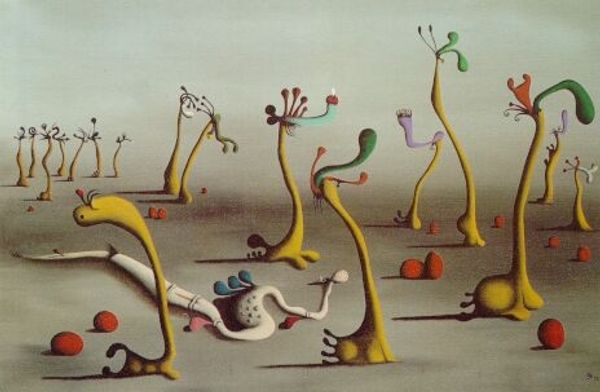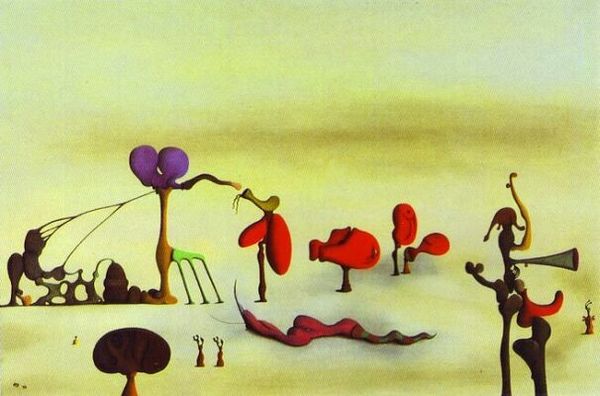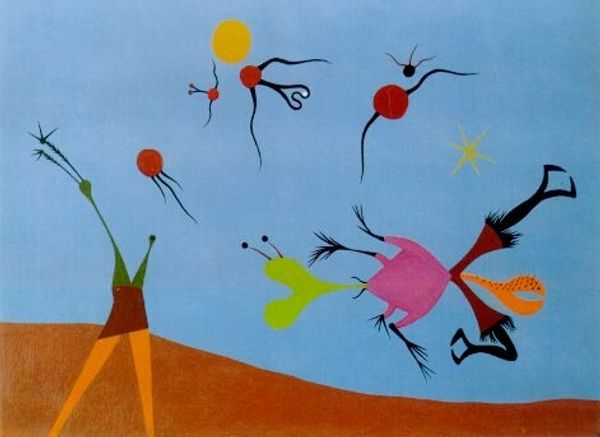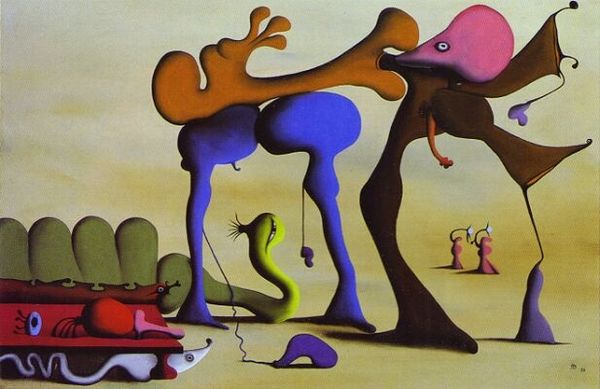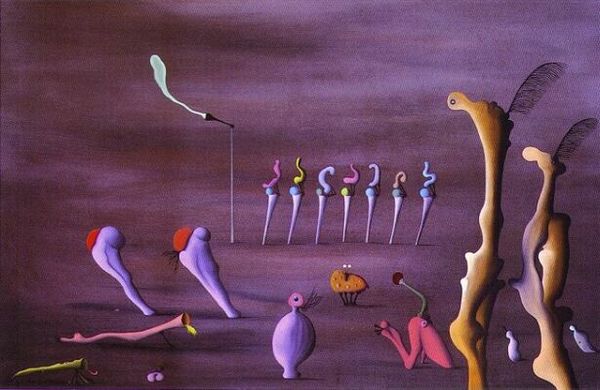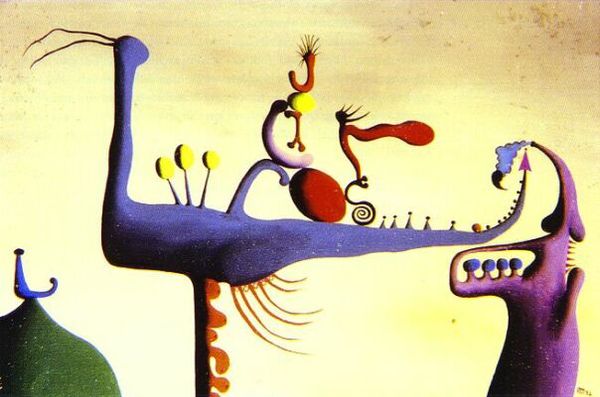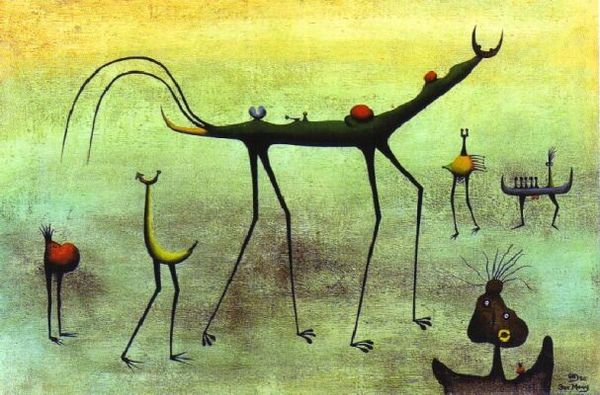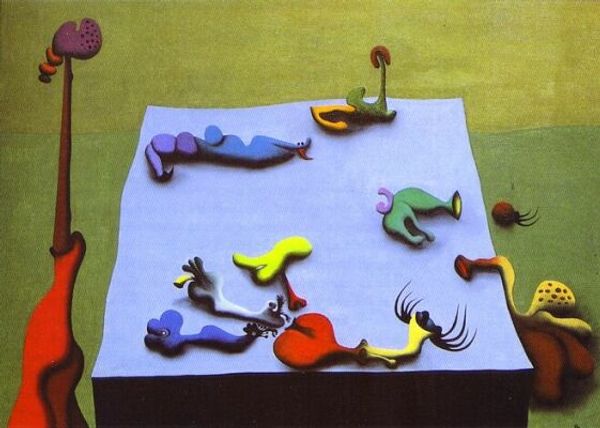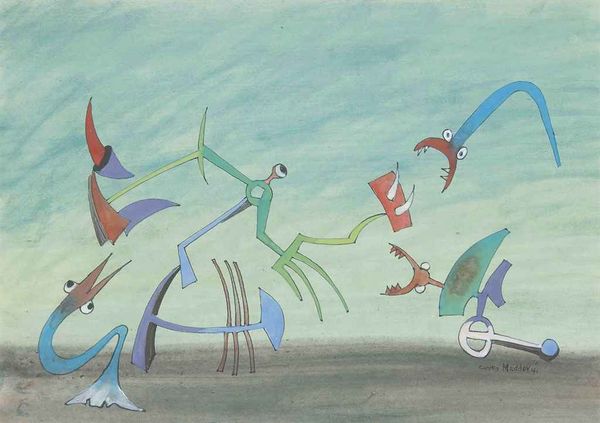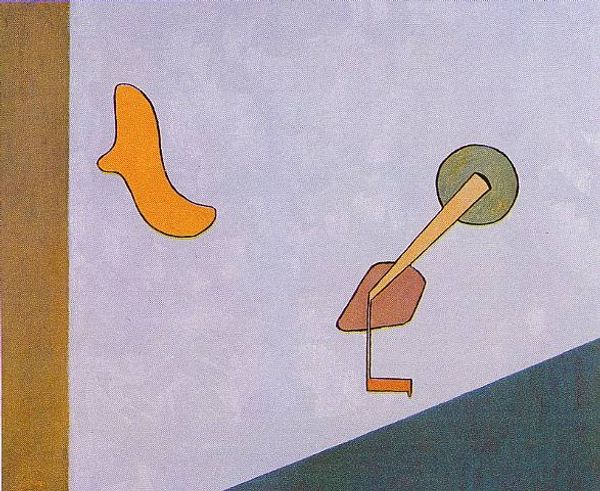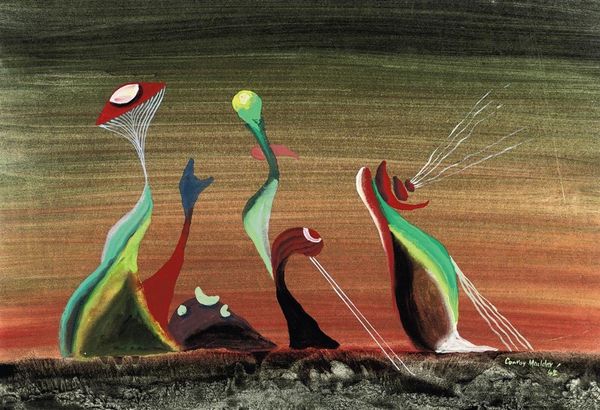
#
tropical
#
green and blue tone
#
aquatic colours
#
green background
#
abstract nature shot
#
artificial colours
#
watercolour illustration
#
psychedelic
#
green and blue
#
simple block coloured background
#
orange
Copyright: Desmond Morris,Fair Use
Editor: Here we have Desmond Morris's "The Nest I," created in 1947. It looks like oil on canvas, with very stylized forms. It feels quite unsettling; the figures are bird-like, yet alien. How do you interpret this work from a formalist perspective? Curator: Immediately, the relationships between the shapes command attention. Note the flat planes of colour and the sharp, angular lines defining each figure. The composition dispenses with traditional perspective, creating a flattened space where forms interact on a purely visual level. Editor: So, you're saying it's less about what the "birds" might represent and more about how those shapes relate to each other? Curator: Precisely. The artist is engaging with fundamental formal elements, reducing recognizable forms into abstracted geometric shapes. The title "The Nest" implies organic forms. What is your observation of its visual properties? Editor: The nest shapes echo the triangular forms of the bird. Plus, I see the echoing colour, red and yellow/orange tones, against the pale blue-green. They aren’t realistic colours. Curator: Indeed. The unnatural color palette, divorced from mimetic representation, further underscores Morris’s formal concerns. This choice highlights the artwork's self-referential nature. Did you note the texture? Editor: It does appear smooth and flat, not much impasto at all. Almost like it’s not about the hand of the artist. Curator: A deliberate negation of expressive brushwork; attention focuses instead on the relational dynamism of colour and form. Editor: That gives me a new appreciation for how much Morris can convey just through colour and shape, stripping away other elements. Thank you! Curator: A rewarding exploration, wouldn't you say? There’s always more to learn with visual art.
Comments
No comments
Be the first to comment and join the conversation on the ultimate creative platform.
